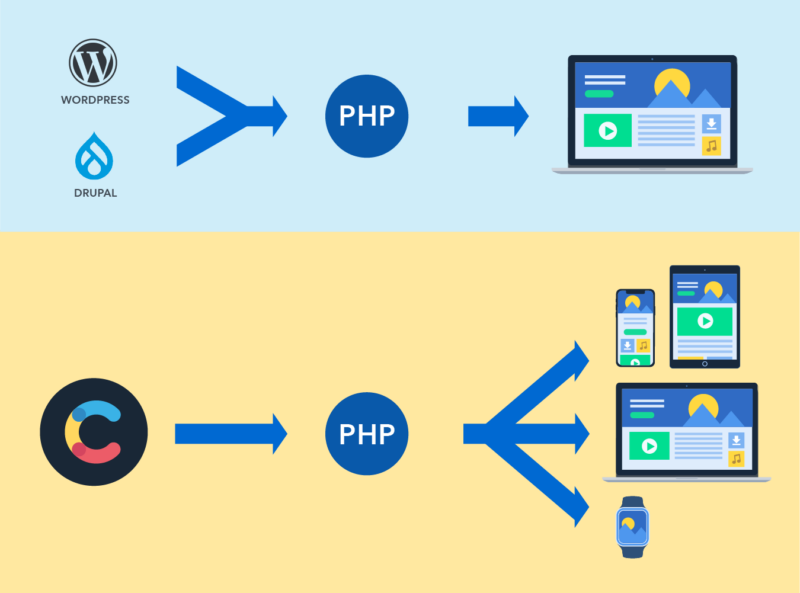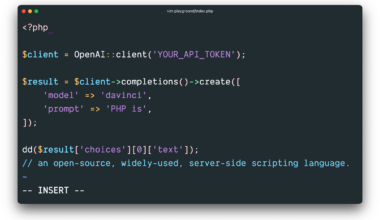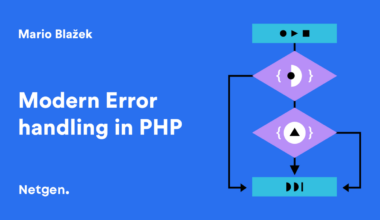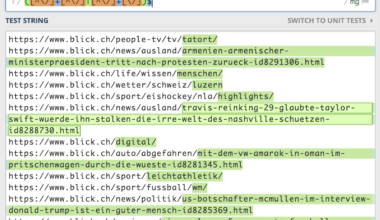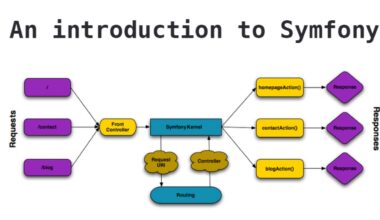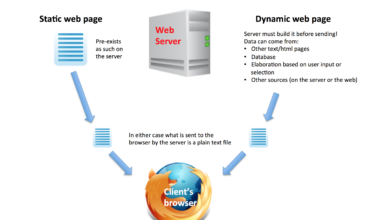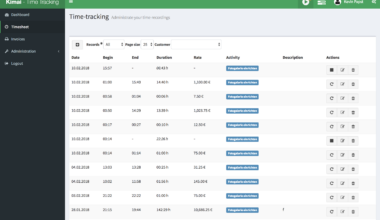Introduction to PHP web services
As the internet grows, web services are becoming more and more important to businesses and individuals alike. PHP, being one of the most popular programming languages, is an excellent choice for building web services. In this section, we will introduce you to PHP web services and their benefits.
A PHP web service is a web-based application that uses PHP to handle data exchange between two different systems. It enables communication between different programming languages, allowing them to interact seamlessly. Web services are used for various purposes, such as accessing data from a remote database, sending emails, and even making payments.
One of the most significant advantages of PHP web services is that they are platform-independent. This means that they can run on any operating system, including Windows, Linux, and macOS. PHP web services are also lightweight, making them easy to deploy and maintain. Additionally, they are scalable, meaning that they can handle a large number of requests without slowing down.
There are two types of PHP web services: SOAP and RESTful. SOAP is an XML-based messaging protocol used for exchanging structured data between applications. RESTful web services, on the other hand, use HTTP requests to access and manipulate data. RESTful web services are more popular due to their simplicity and flexibility.
In the following sections, we will delve deeper into RESTful web services and show you how to build and publish them using PHP. By the end of this article, you will have a good understanding of how PHP web services work and how to create your own.
Understanding RESTful web services
REST (Representational State Transfer) is an architectural style that was introduced by Roy Fielding in his 2000 doctoral dissertation. It is a set of constraints and principles for designing web services. RESTful web services are based on these principles and are widely used for creating APIs (Application Programming Interfaces).
The key principles of RESTful web services are:
-
Client-server architecture:
The client and server are separated and communicate through HTTP requests and responses. -
Statelessness:
Each request from the client to the server contains all the information necessary to complete the request. The server does not store any session data. -
Cacheability:
Responses from the server can be cached by the client to improve performance. -
Uniform interface:
The interface between the client and server should be consistent across different web services. -
Layered system:
The architecture should be layered, with each layer having a specific responsibility.
RESTful web services use HTTP methods to interact with resources. The four most commonly used methods are:
-
GET:
Used to retrieve a resource -
POST:
Used to create a new resource -
PUT:
Used to update an existing resource -
DELETE:
Used to delete a resource
RESTful web services use URLs to identify resources. Each resource has a unique URL, which is used to access it. For example, if you have a web service that manages products, the URL for a specific product might look like this:
https://example.com/products/1234
In this example, “1234” is the ID of the product.
To create a RESTful web service using PHP, you can use a framework such as Laravel or Slim. These frameworks provide tools and libraries that make it easy to create and publish web services. You can also build a RESTful web service from scratch using PHP and Apache.
In the next section, we will show you how to build a PHP web service with JSON. JSON is a lightweight data format that is commonly used for exchanging
Building a PHP web service with JSON
JSON (JavaScript Object Notation) is a popular data interchange format that is easy to read and write. It is lightweight and can be used to exchange data between different programming languages. In this section, we will show you how to build a PHP web service using JSON.
First, we need to create a PHP file that will handle the requests from the client. Let’s call it “api.php”. In this file, we will define a function that will return data in JSON format. Here is an example:
function get_data() {
$data = array(
'name' => 'John',
'age' => 30,
'email' => 'john@example.com'
);
header('Content-Type: application/json');
echo json_encode($data);
}
In this example, we have defined a function called “get_data”. It returns an array of data, which includes a name, age, and email. We then set the content type header to “application/json” to indicate that we are returning data in JSON format. Finally, we use the “json_encode” function to convert the data array to JSON format and echo it back to the client.
Now that we have defined the function to return data in JSON format, we need to handle the HTTP request from the client. We can do this using the “switch” statement in PHP. Here is an example:
$request_method = $_SERVER['REQUEST_METHOD'];
switch($request_method) {
case 'GET':
get_data();
break;
default:
header("HTTP/1.0 405 Method Not Allowed");
break;
}
In this example, we are using the “switch” statement to handle the HTTP request. We first get the request method using the “$_SERVER” variable. We then use the “switch” statement to handle the “GET” request. If the request method is “GET”, we call the “get_data” function. If the request method is not “GET”, we return a “Method Not Allowed” error.
To test our PHP web service, we can use a tool such as Postman. We can send a GET request to our “api.php” file and receive the JSON data in response.
Building a PHP web service with JSON is a simple and effective way to exchange data between different systems. By using JSON,
Publishing a PHP web service using Apache
After building a PHP web service, the next step is to publish it so that it can be accessed by clients. Apache is a popular web server that can be used to publish PHP web services. In this section, we will show you how to publish a PHP web service using Apache.
To publish a PHP web service using Apache, you need to follow these steps:
1. Install Apache and PHP on your server: Before you can publish your PHP web service, you need to have a web server that can run PHP code. Apache is a popular web server that can run on Linux, Windows, and macOS. You can download and install Apache from the official website. Once you have installed Apache, you need to install PHP and configure it to work with Apache.
2. Create a virtual host: A virtual host is a way to host multiple websites on a single server. To create a virtual host for your PHP web service, you need to edit the Apache configuration file. The configuration file is usually located at “/etc/apache2/apache2.conf” on Linux or “C:\xampp\apache\conf\httpd.conf” on Windows. Add the following code to the end of the configuration file:
<VirtualHost *:80>
ServerName example.com
DocumentRoot /var/www/html/myapi
<Directory /var/www/html/myapi>
Options Indexes FollowSymLinks MultiViews
AllowOverride All
Order allow,deny
allow from all
</Directory>
</VirtualHost>
In this example, we are creating a virtual host for a website called “example.com”. The DocumentRoot is the directory where your PHP web service is located. The “Directory” section specifies the permissions for the directory. The “AllowOverride All” directive allows you to use .htaccess files to override the default Apache settings.
3. Restart Apache: After creating a virtual host, you need to restart Apache for the changes to take effect. On Linux, you can use the command “sudo systemctl restart apache2”. On Windows, you can restart Apache using the XAMPP control panel.
4. Test your PHP web service: To test your PHP web service, you can use a tool such as Postman. Send a GET request to your PHP web service using the URL “http://example.com/my
Final thoughts on PHP web services
PHP web services are a powerful tool for exchanging data between different systems. They enable communication between different programming languages and are used for various purposes, such as accessing data from a remote database, sending emails, and making payments. In this article, we have introduced you to PHP web services and shown you how to build and publish them.
When building PHP web services, it is essential to understand the principles of RESTful web services. RESTful web services are based on a set of constraints and principles for designing web services. They use HTTP methods and URLs to interact with resources, making them simple and flexible.
JSON is a popular data interchange format that is easy to read and write. Building a PHP web service with JSON is a simple and effective way to exchange data between different systems.
When publishing a PHP web service, Apache is a popular web server that can be used to host it. By creating a virtual host and configuring Apache to work with PHP, you can make your PHP web service accessible to clients.
In conclusion, PHP web services are an excellent choice for businesses and individuals who need to exchange data between different systems. By following the principles of RESTful web services and using tools such as JSON and Apache, you can build and publish PHP web services that are lightweight, scalable, and platform-independent.
